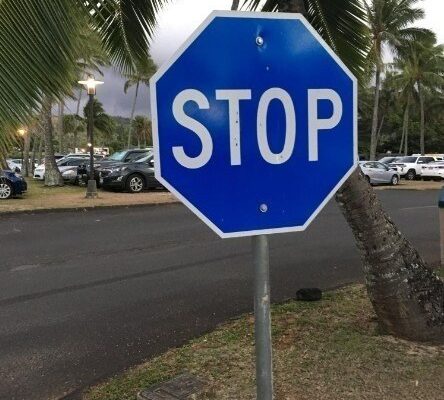You’ve likely seen the familiar red, octagonal stop sign at intersections. But what if you spotted a blue one instead? While confusing, blue stop signs do exist—just not on public roads.
In the U.S., all official traffic signs must follow federal guidelines, which require stop signs to be red with white letters.
A blue stop sign doesn’t meet these rules and is typically used on private property like gated communities, parking lots, or campuses.
Though unofficial, it still means “stop” and is meant to guide drivers in those areas. Red was chosen for official stop signs because it’s highly visible and signals danger.
Traffic sign colors have specific meanings: red for stop, yellow for caution, green for directions, blue for information, and white or black for regulations.
A blue stop sign breaks from these conventions, so it’s not legally binding—but ignoring it could still cause accidents or trouble with private enforcement.
While rare, other unusual stop signs exist, like bilingual ones in Quebec or LED-lit versions for better visibility. If you see a blue stop sign, it’s best to treat it like a real one—better safe than sorry.
